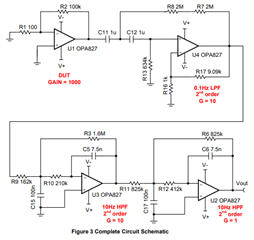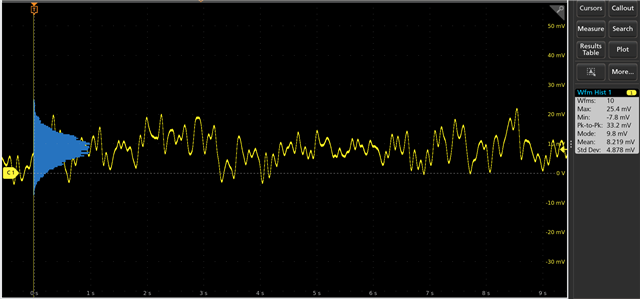Tool/software:
I am looking to test a voltage reference with low noise under 10uVRMS with the Noise filter made in the SLAU522 project. I have made the measurement for the regulator on the test fixture. It looks like my data matches what was collected in the paper. I am mostly looking to have a meeting with an engineer discussing the findings they may have had, as well as compare some data I have collected with a remake of this project.



